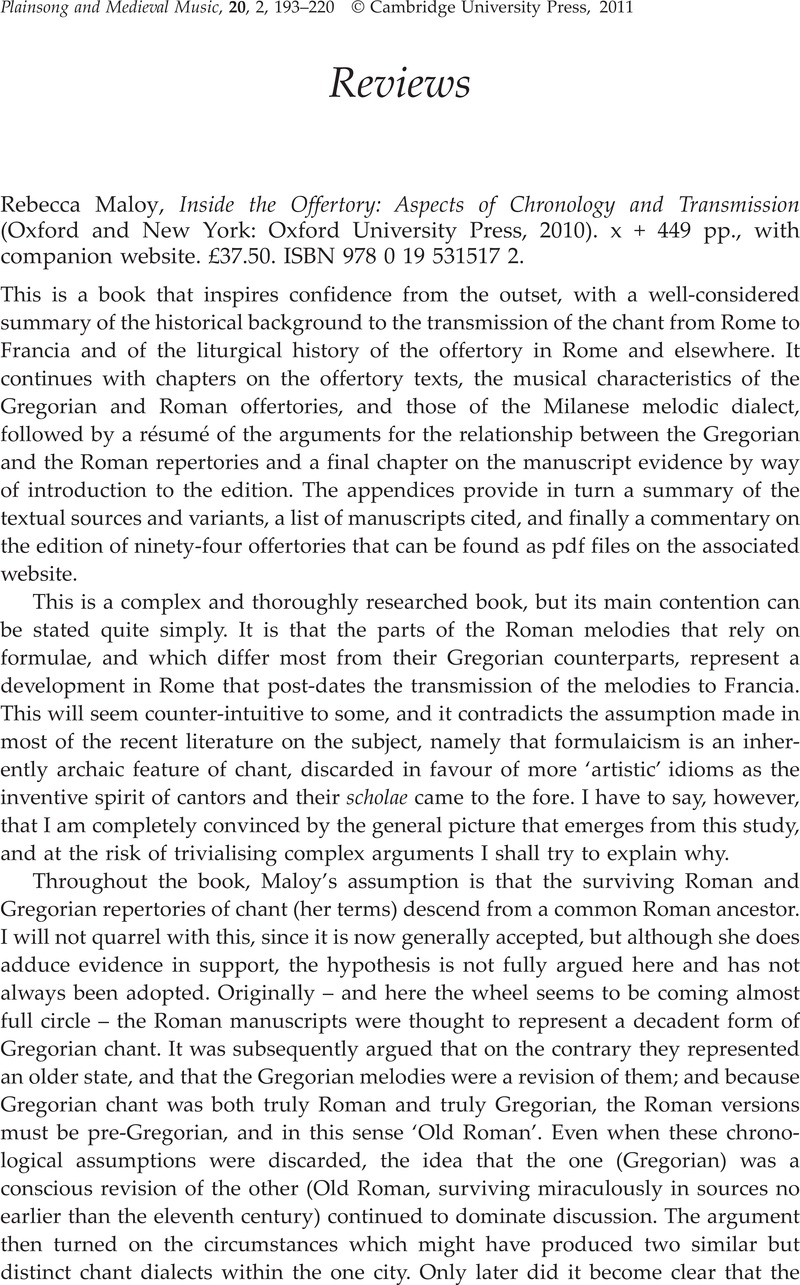No CrossRef data available.
Published online by Cambridge University Press: 15 September 2011

1 Expositio antiquae liturgiae gallicanae, ed. E.C. Ratcliff, Henry Bradshaw Society 98 (London, 1971), 10.
2 Origines du culte chrétien (5th edn, Paris, 1925), 216.
3 Cantilena romana (Paderborn, 2001).
4 See especially his ‘Toledo, Rome and the Legacy of Gaul’, Early Music History 4 (1984), 49–99CrossRefGoogle Scholar .
5 The Advent Project (Berkeley, 2000), 299.
6 Maloy argues (pp. 31, 50) that the offertory had a preconceived musical form (i.e. with verses and repetenda) which the texts were arranged to accommodate.
7 ‘Tropis semper variantibus: Compositional Strategies in the Offertories of the Old Roman Chant’, Early Music History 17 (1998), 1–69, esp. 12–16CrossRefGoogle Scholar .
8 Although the verses of the offertories are generally said to have ‘disappeared’ in the later Middle Ages, this is not entirely the case. In the Salisbury rite they were included during the week on vacant ferial days in Advent and Lent, on alternate days if there were more than one verse. More surprisingly, as Theodore Karp has shown (The Post-Tridentine Mass Proper (Middleton, Wisconsin, 2005), 1:144, 257), they resurface in the Graduale Lugdunense of 1738.